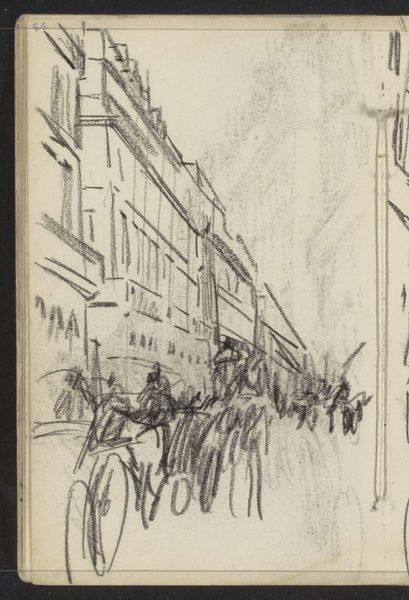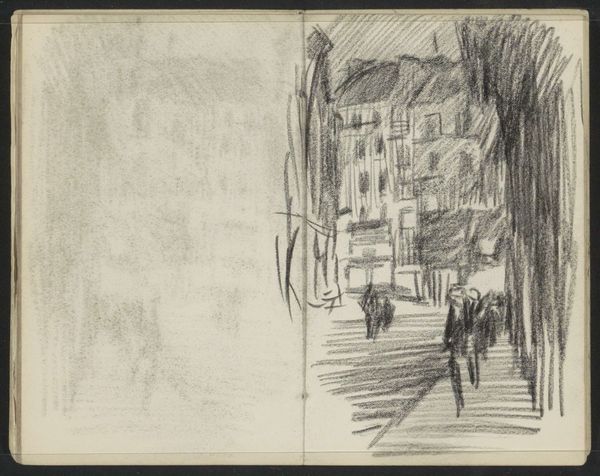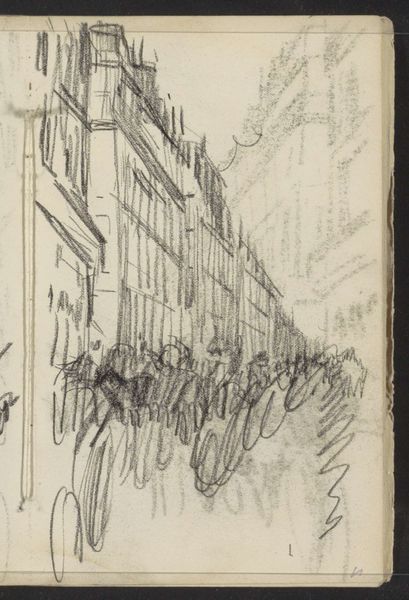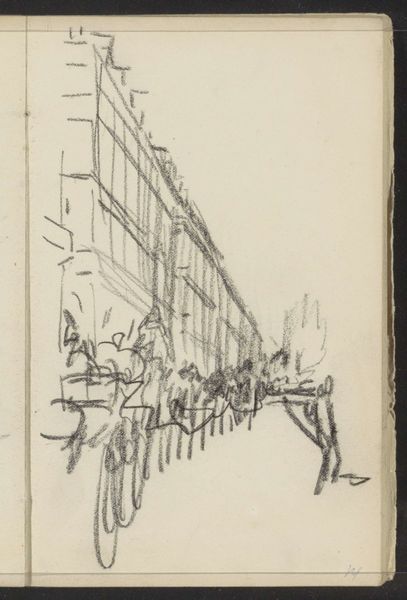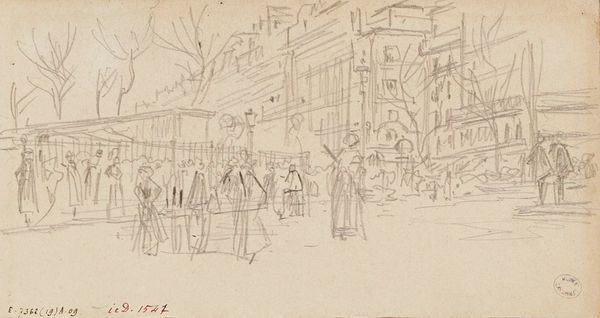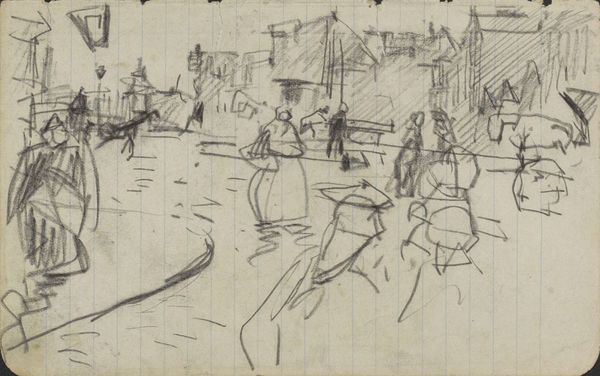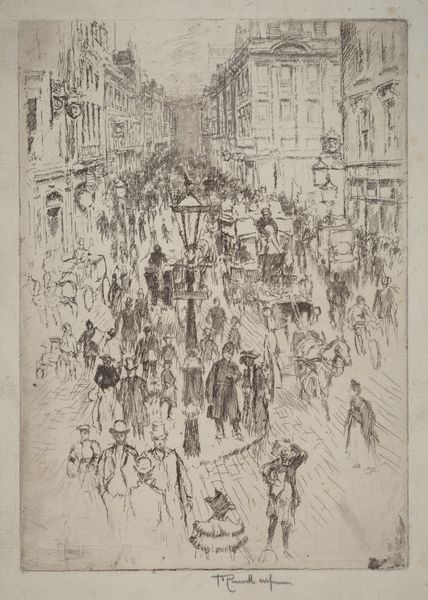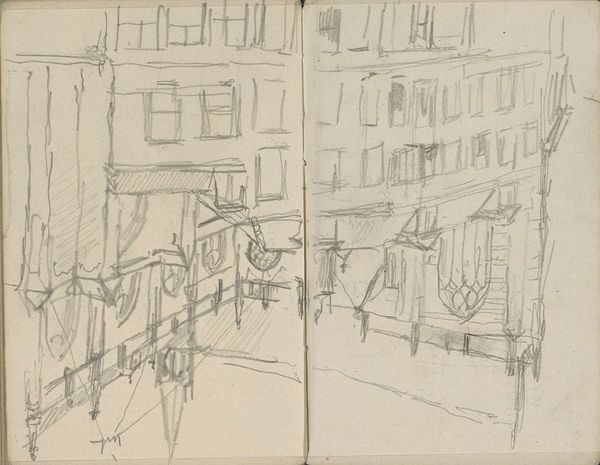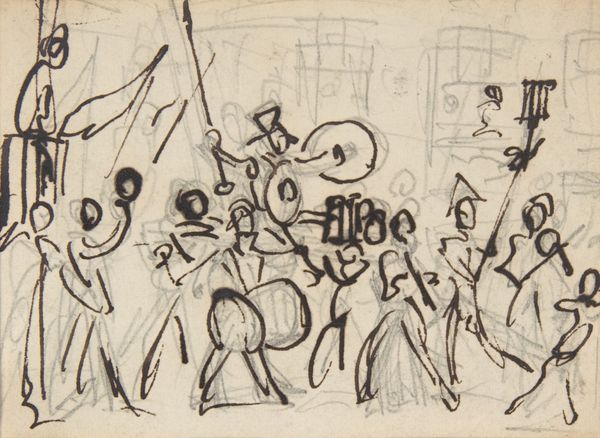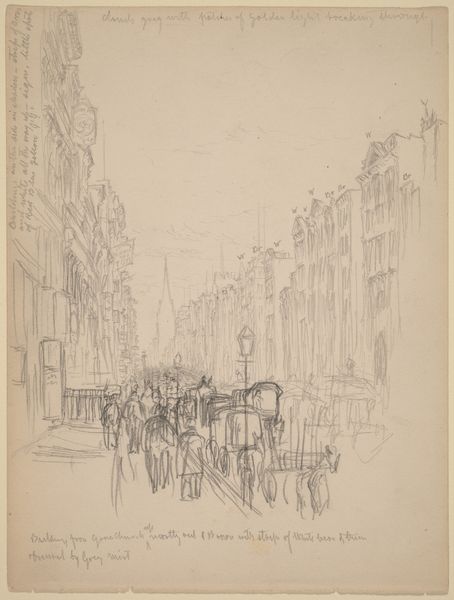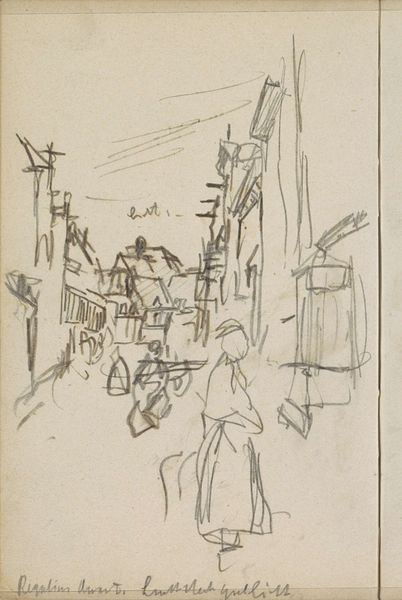
Rijtuigen op een plein in Parijs, mogelijk het Place de la Concorde 1887 - 1934
0:00
0:00
Copyright: Rijks Museum: Open Domain
Curator: My initial impression is that the artist has captured the clamorous energy of urban life, yet, at the same time, it is somehow muffled and distant. Editor: That is a sharp observation. We are looking at a pencil drawing by Isaac Israels, aptly titled "Rijtuigen op een plein in Parijs, mogelijk het Place de la Concorde" or, “Carriages on a square in Paris, possibly the Place de la Concorde,” dating from between 1887 and 1934. It is currently held in the collection of the Rijksmuseum. Curator: The way Israels uses line is particularly striking. See how he creates depth using the weight and density of marks? He reduces architectural grandeur to a mere framework, focusing instead on the dynamism of the street. Editor: Indeed. Consider the historical context. Paris during this era was undergoing rapid modernization. Artists grappled with how to depict the changing city, its evolving social structures. Israels seems drawn to the bustling public spaces, the interaction of different social classes, and the fleeting moments of modern life. Curator: Exactly. He dispenses with idealized depictions and focuses on the raw and often chaotic aspects of contemporary experience. Note how the pencil strokes vary. The lines are sketchy, hesitant, which suggests he might be seeking to reproduce something authentic. Editor: It raises the question of who the intended audience might be, too. Is this artwork a personal study, part of a sketchbook perhaps? Or, was it made with the idea of exhibiting in mind? How would this alter its reception? We are looking at how the development of urban centres such as Paris shaped not only the lives of people living in cities, but changed our conception of art, as well. Curator: For me, the gestural quality is paramount. He captures something fundamental about the rhythms of the city, doesn’t he? The carriages, the figures... they’re all part of a visual symphony of movement. Editor: A symphony fraught with its own political undertones, as Paris sought to forge itself as a modern metropolis, yet these were transformations at the expense of its communities. It certainly provokes interesting lines of inquiry. Curator: Absolutely. Thinking about his mark-making has clarified, for me, the dynamic energy embedded in these bustling street scenes. Editor: And examining its context reveals broader themes regarding Paris’ transformation at the end of the 19th Century.
Comments
No comments
Be the first to comment and join the conversation on the ultimate creative platform.
